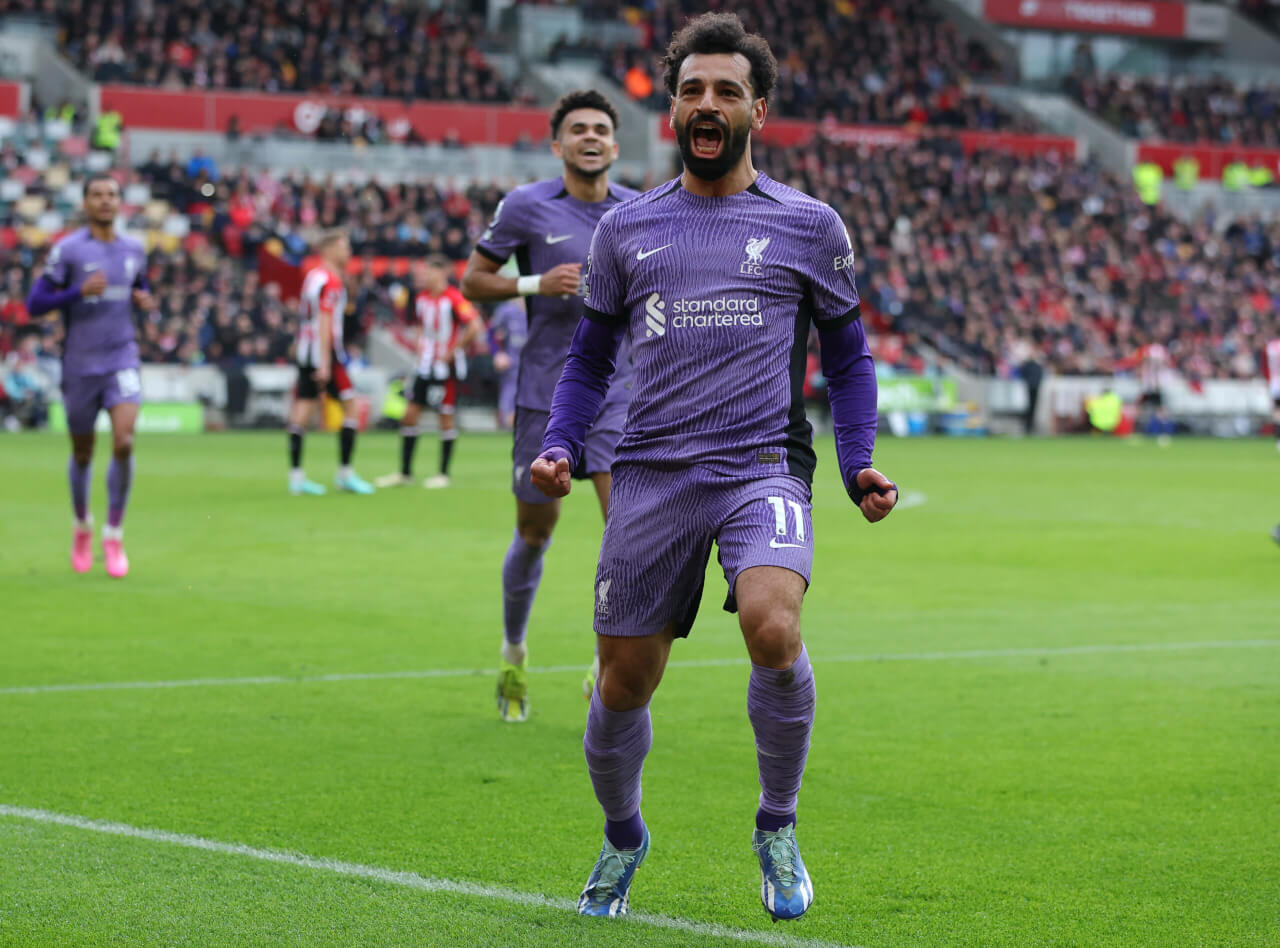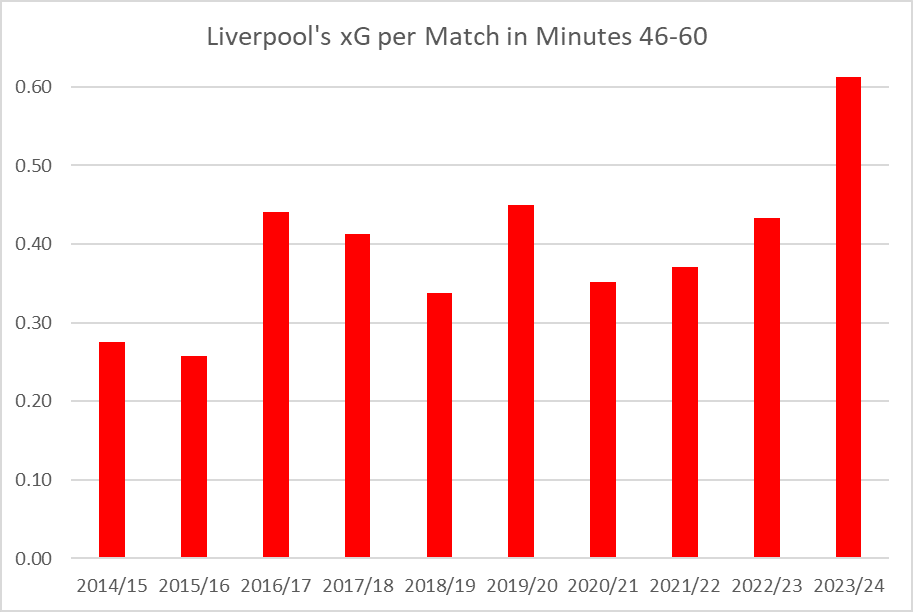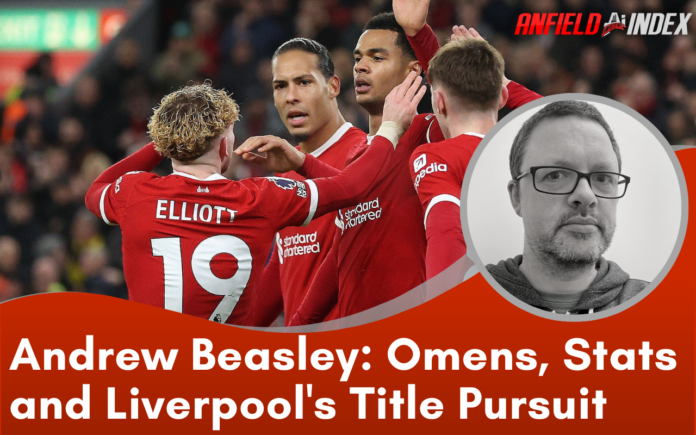Historical Coincidences and Football Omens
Nobody ever looks for omens after a win in the early weeks of the season. But once you get to this stage of a campaign, people cling to any historical coincidence or precedent which suggests their team is destined for success.
The history of football is so large that you can find a prior example to back up any position you wish to take, and there’s no limits to the niche levels to which people are prepared to stoop in the pursuit of hope. Take Liverpool’s 4-1 win over Brentford on Saturday. It took the Reds to a total of 57 points after 25 games. They had the same tally at this stage of 2021/22 and finished second, while Tottenham were level three years earlier and dropped to fourth (though did reach a Champions League final as you probably remember).
But like all omens, it’s drawn from entirely different circumstances; believe it or not, Liverpool did not beat AC Milan in Istanbul because Ken and Deirdre Barlow got married on Coronation Street, just has they did when the Reds became kings of Europe in 1981.

Drawing Parallels from Past Victories
You could look at the result last weekend and easily draw a weird parallel to support your viewpoint. It was the first league match on the road which Liverpool won 4-1 after leading 1-0 at half time since December 1989, and they won the title that season. The fact that previous victory came against Manchester City shows how irrelevant it is in 2024 but some fans will cling to that nugget of trivia in the hope it proves decisive.
Significance of Second-Half Performances
The shift from a narrow lead at the interval to a comfortable margin at full time did start a thought process though. It’s been happening quite often lately. Last month, Liverpool won 4-0 at Bournemouth after it was 0-0 at half time, just the third Premier League away match in which the Reds had done this.
(Assuming you’re old enough, you’ll remember the others: at Charlton on the final day of 2000/01, with Robbie Fowler starting the scoring with a looped overhead finish, and at Burnley towards the end of 2009/10, Alberto Aquilani getting a hattrick of assists including one off his back).
Just remembered this goal, so good pic.twitter.com/X09Wv2UqOn
— Andrew Beasley (@BassTunedToRed) February 21, 2024
If not as ultimately comfortable in score line terms, the Reds’ 4-2 win over Newcastle was also goalless at the break. And even if the match was only settled late on, Liverpool set a Premier League expected goals record in the match, with the 4.6 they amassed in the second half only bettered twice in the big five European leagues this season. That’s for whole matches, by the way – Bayern Munich with 5.8 against Darmstadt and 4.8 versus Bochum – not just halves.
Coincidences and Consistencies
Another strange coincidence (though not by the standards of soap opera weddings) is that the Reds broke the deadlock against both the Magpies and the Cherries in the 49th minute. At Brentford, the returning Mohamed Salah squandered a big chance by poking the ball wide of Mark Flekken’s goal in the 51st minute, just 38 seconds earlier in match terms than Luis Díaz’ goal to retake the lead in Liverpool’s 3-1 win over Burnley the week before.
By the 55th minute at the Gtech Community Stadium, Salah had scored anyway. Even in defeat at Arsenal, Liverpool’s best spell – which wasn’t a high bar – occurred immediately after half time. Minutes 46 to 60 have generally been positive for Jürgen Klopp’s troops in the last two months.

Analysing Liverpool’s Second-Half Scoring Trends
Yet in the wider context, their output in this section of matches does not appear particularly special. Per Transfermarkt, Liverpool have scored seven goals in the opening 15 minutes of second halves this season, markedly behind Tottenham (12) and Arsenal (10), with the proportion of their goals scored in this period four per cent below league average too. Back in 2018/19, the Reds scored 18 league goals in the first quarter hour after the interval, Brendan Rodgers’ side going one better four years earlier.
Role of Underlying Performance and Data
Goals are always random, though. Darwin Núñez can dribble past one goalkeeper and hit the post before chipping one who is almost 6’5” tall when only 17 yards from goal. What matters for long term hopes is underlying performance and data from Understat shows Liverpool are more potent immediately after half time than they were in the preceding nine campaigns.

But here’s the thing: only one of Liverpool’s 54 time windows from the last nine seasons saw them amass more xG per match than they have in 46-60 in 2023/24. The period in question was the final 15 minutes of games in 2018/19, with the title chasing Reds averaging 0.67 expected goals per match.
That period also contains stoppage time too, though, so has an unfair advantage in comparison terms. In fairness, the 46-60 data possibly contains added time from the first half – it’s not entirely clear from the data – but that will apply across all seasons and there is never as much extra time played at the conclusion of that half as there is in the second.
Even if it is included, finishing the first half strongly is no bad thing. Indeed, Liverpool have scored in the 45+ period at Tottenham, Brighton and Arsenal this season, three of the toughest trips the Premier League has to offer. Fast starts to matches are all well and good but the Liverpool class of 2023/24 are waiting until the beginning of the second half to put the hammer down. Now, let me just quickly check the goals and xG for this period for past title winners and we’re good to go.
Data correct prior to the home game with Luton




